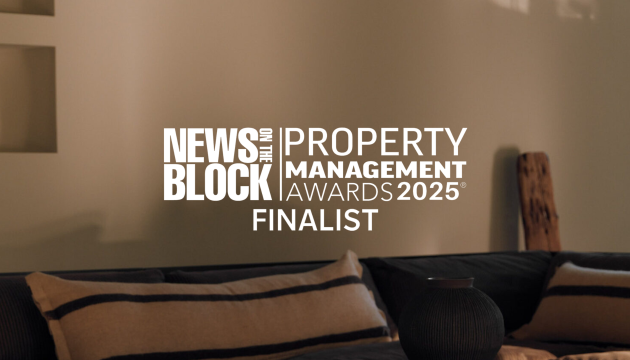The commercial real estate market is undergoing an unprecedented transformation in how office spaces are valued, operated, and traded. While premium offices are commanding record-high rents, capital values have fallen, leaving investors, valuers, and lenders grappling with this new reality.
The Perfect Storm: Economic Shifts and a Workplace Revolution
The office sector is being reshaped by two seismic forces. First, steep interest rate hikes – the sharpest in two decades – are rewriting the rules of investment returns. Second, the pandemic accelerated a cultural shift towards hybrid working, with tenants demanding greater flexibility, hospitality features, and premium experiences.
These dynamics have thrown traditional valuation models, relying on long leases and predictable cash flows into question. As CEO of TSP, Zac Goodman describes it, the sector is in “a real state of flux,” with market liquidity and investment valuations under strain.
The Valuation Paradox: Rising Rents, Falling Values
The biggest puzzle lies in the divergence between rental growth and capital value decline. Prime office rents have soared – some by 30-40% – driven by demand for high-quality, amenity-rich spaces. Yet, capital values for these same assets have dropped, pressured by rising interest rates and uncertainties around valuing new operational models.
This “premiumisation” of office space highlights the challenge: these high-performing assets now operate more like hospitality businesses, blending traditional leasing with service-based elements that are harder to quantify.
The Evolution of Office Space: from Real Estate to Hospitality
The traditional office lease model is giving way to a hospitality-driven approach:
👉 Landlords are delivering fully fitted, high-spec spaces
👉 Shorter, more flexible leases are becoming the norm
👉 Amenities like wellness facilities and concierge services are integrated
👉 Headline rents are increasing while incentives are shrinking.
Valuers face the complexity of comparing these managed spaces with traditional offices. As Jonathan Vanstone-Walker, Managing Director at TSP and RICS Registered Valuer, points out, “If you go the full DCF route, valuers will have to justify every input they make,” adding layers of uncertainty.
Learning from the Hotel sector
The hospitality industry offers a potential playbook.
Hotels have long valued properties based on operational income and brand impact, using metrics like RevPAR (Revenue Per Available Room). Adapting such metrics for office valuation – blending base rent with service income – could provide a clearer picture of value.
The Future of Office Valuation
Several trends are likely to redefine how offices are valued:
- NEW METRICS
Beyond headline rents, metrics like occupancy rates and service revenue may become standard - HYBRID MODELS
Combining traditional valuation for physical assets with business-oriented approaches for operational elements - MARKET STRATIFICATION
Distinct methods for prime versus secondary spaces - DATA-DRIVEN COMPARISONS
As more flexibly operated buildings transact, valuation benchmarks will improve.
Adapting to a New Reality
The office isn’t dead – it’s evolving.
With its blend of real estate and operational elements, the modern office must be assessed with a new lens, one that values the experiences it creates and the communities it supports. For investors and lenders, those who adapt to these changing dynamics will be best positioned to succeed in a market that rewards quality and innovation while punishing obsolescence.
The office of the future isn’t just a space – it’s a service, a community, and an experience. Understanding its value means embracing its complexity.
Discover the Core to Floor® Advantage
If you’re navigating the challenges of evolving office valuations and tenant demands, TSP’s Core to Floor® approach offers a proven solution. By blending traditional property management with hospitality-led services, we help landlords unlock the full potential of their office assets.
With reduced vacancies, improved net rents, and enhanced tenant satisfaction, our hybrid model bridges the gap between conventional offices and flexible coworking spaces.
Let us show you how Core to Floor® can future-proof your portfolio while delivering superior returns.
Download our free playbook here, or contact us today to learn more about how TSP can transform your office assets into thriving, community-driven spaces that tenants love and investors value.
Featured Stories & Insights
 17th November 25
17th November 25
Lessons Learnt from 2025 | by Zac Goodman
The market shifted (again), expectations changed (again), and the way people use space evolved in...
Read More 10th November 25
10th November 25
From Vauxhall to Value: How Aldgate Became London’s Charity Heartland
TSP’s Jonathan shares his perspective on why Aldgate has become the go-to destination for London’s...
Read More 30th October 25
30th October 25
Five Commercial Property Trends for 2026
As 2025 comes to a close, the UK commercial property market has been shaped by...
Read More 13th October 25
13th October 25
TSP Named Finalist at the 2025 Property Management Awards
LONDON, 13th October 2025 – TSP has been shortlisted for Boutique Property Management Company of...
Read More 1st October 25
1st October 25
Greener Offices for Charities
Sustainability has moved from being a “nice to have” to an essential requirement for charities,...
Read More 29th September 25
29th September 25
Community in The Office: Why does it matter?
The Spaces to Places: Voice of the Customer 2025 report makes one thing clear: people...
Read MoreView all